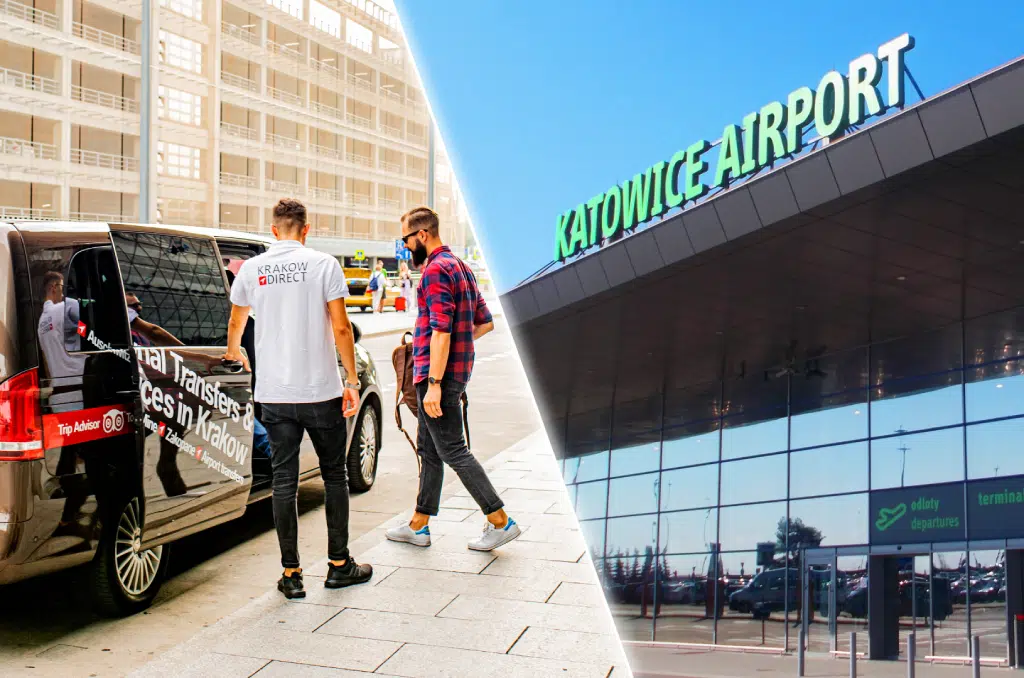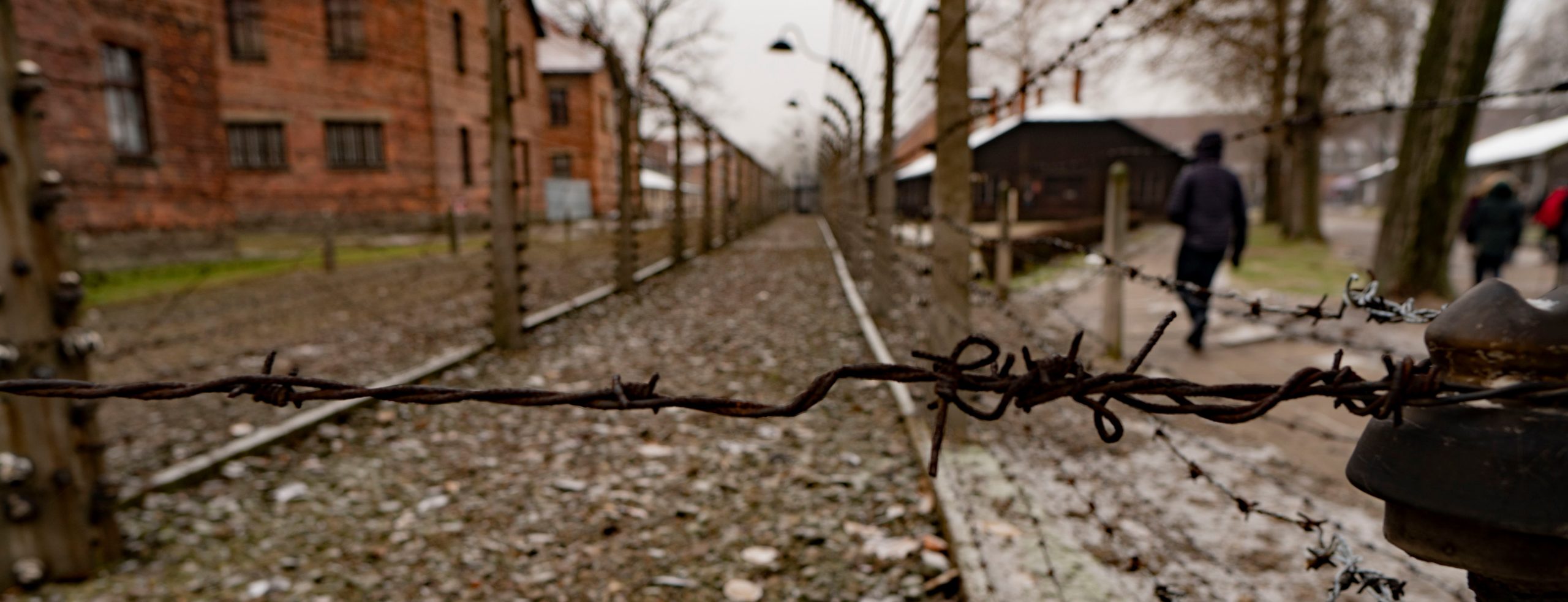
Auschwitz was the largest extermination camp complex built by the Nazis during World War II. The centre was created in 1942 in southern Poland, in the small town of Oświęcim. As early as 1941, tens of thousands of prisoners were diverted to the site. It turns out that over 1.1 million people were murdered between 1940 and 1945. Among them were political enemies, European Jews, Roma, Slavic and Sinti people.
Inception of Auschwitz Memorial and Museum
Antisemitism has its roots in various superstitions. Unaware people saw the source of their unhappiness not in the way the state was governed but in a particular national minority. The systematic murder and persecution led to the deaths of several million people and the destruction of the Jewish cultural heritage. The Holocaust changed the course of history. To this day, it also remains a symbol of the greatest tragedy that man can inflict on man.
The first exhibition at Auschwitz was opened in 1947. It covered part of the main camp. Eight years later, more blocks were opened to the public.
Some buildings have been dedicated to the memory of foreigners sent there to die. The most moving is undoubtedly the exhibition from the 1950s depicting the life of the prisoners.
In the 1990s, additional signage and plaques were added to the museum to make it easier for tourists to navigate around the memorial site.
About Auschwitz State Museum
Auschwitz Museum – Visitor entrance and tour information
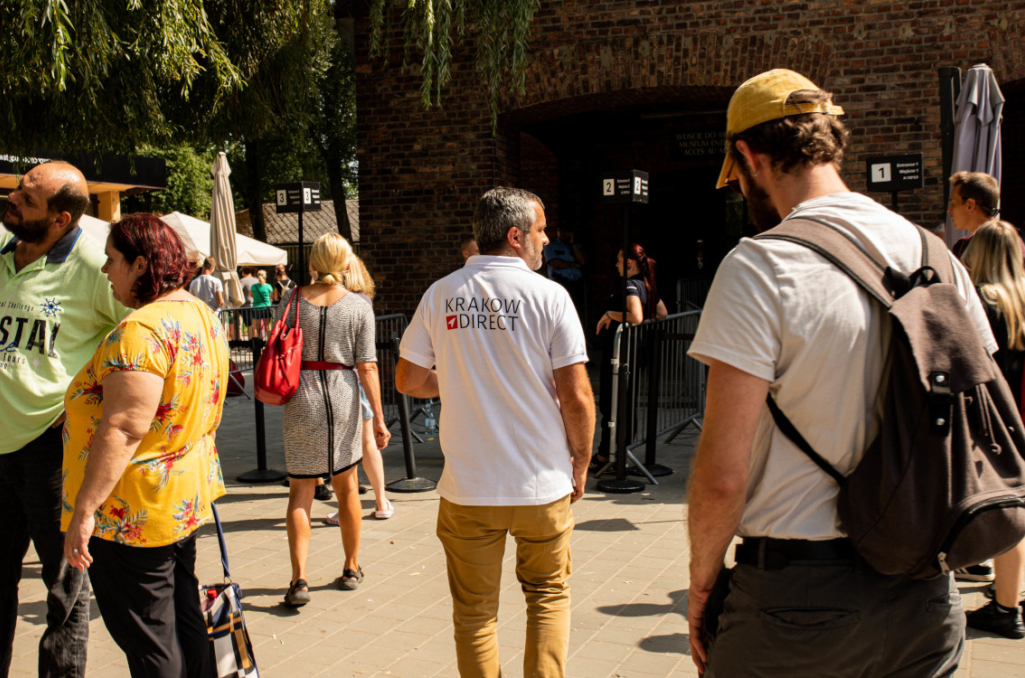
The former KL Auschwitz was the original complex established on the former Polish military camp. It contained most of the administrative facilities, including offices of the high ranked SS commandants that ran the whole camp. It also contained the main storage facilities (including the famous “Canada”) and a set of gas chambers and crematoria. It’s also where most of the political persecution and horrible experiments took place – in the infamous Block 4 and Block 11.
Auschwitz II Birkenau
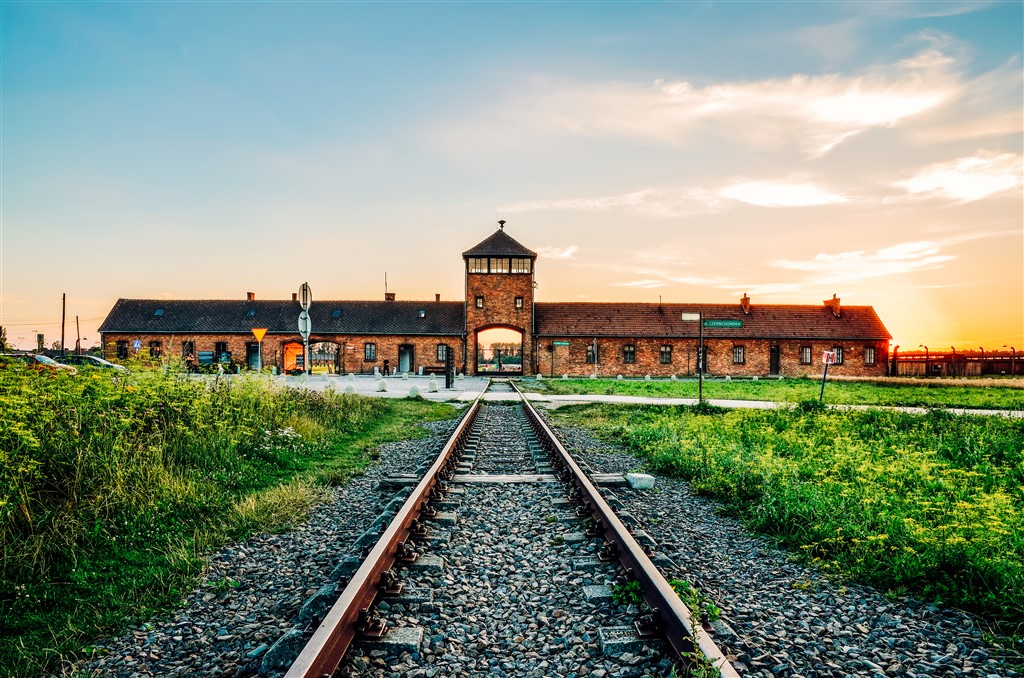
Auschwitz II was the direct result of the Wannsee Conference – this massive expansion was expedited by the SS with the Final Solution in mind. It included the Judenrampe – the train platform where those transported to Auschwitz-Birkenau were separated from their families, turned into prisoners, selected for forced labour, or worse – death in the gas chambers.
Main purpose of Auschwitz II was to house prisoners – as many of them as possible. At its peak, Auschwitz II could hold onto over 120 thousand prisoners. More storage facilities and gas chambers were also built there – though none of them survived until today.
Auschwitz III Monowitz
Monowitz was an expansion funded in 1941 by the German chemical conglomerate IG Farben. Early on it was only supposed to be a rubber factory worked by the citizens of Oswiecim, a prisoner camp was eventually built there to simplify the construction process. It was the first ever Nazi concentration camp to be funded by the private sector.
Working at Monowitz was notoriously difficult. The officers were pushing the prisoners hard to construct the plant in time. The camp prisoners were so overworked, over half of them were being sent out to the gas chambers every month because they couldn’t keep up the pace. Due to constant labour and material shortage, the facility was never finished.
Life of the Auschwitz prisoners
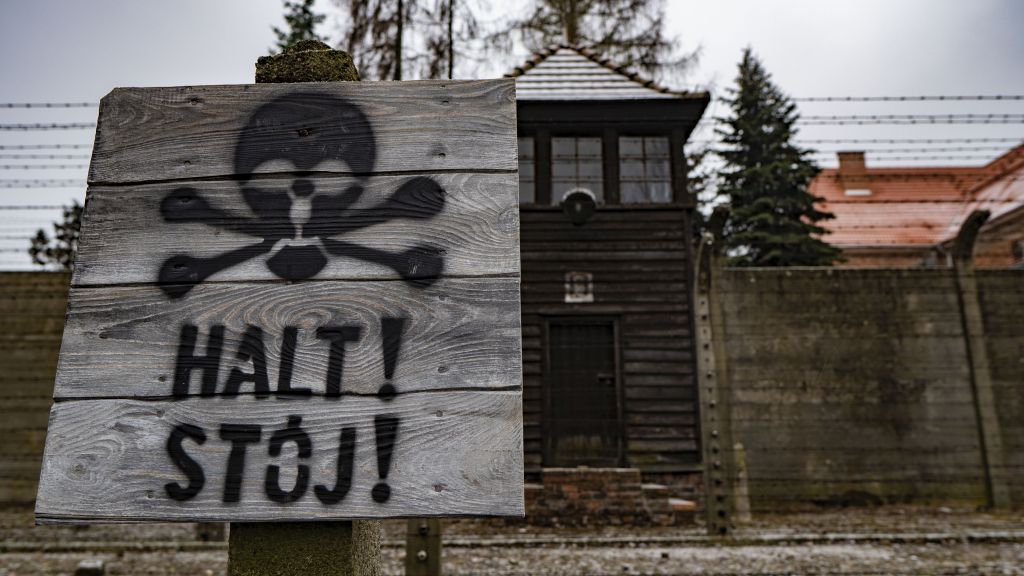
There is no doubt that living conditions in Auschwitz were tragic for everyone. However, the gruelling physical labour, lack of hygiene facilities and the prevailing violence by SS officers proved especially hard on sick and elderly
As soon as they arrived at Auschwitz, their selection would begin. Many of them were immediately directed to the gas chambers and crematoria. Both Polish and Jews guessed what awaited them. Some renounced their children out of concern for their survival. They deluded themselves into thinking that things would be better after passing through the “Arbeit macht frei” gate. The infamous slogan has an intriguing history. Auschwitz museum warning sign and electrified barbed-wire fence
At the camp complex, the prisoners were forced to undress and thoroughly disinfected. For women in Auschwitz, especially young ones, the compulsion to expose themselves in front of a group of strangers was well beyond their comfort zone. During such practice, mainly crying and moaning could be heard. Shaving their heads, on the other hand, took away their last sense of femininity. The part where the baths were located is open to the public at the Auschwitz Museum.
Basic needs and pregnancy in Auschwitz-Birkenau
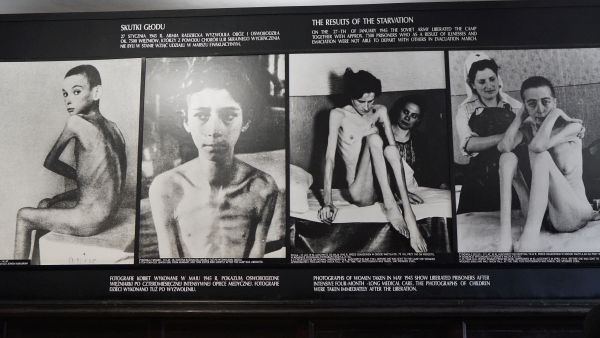
The hunger prevailing in the Nazi camp was unbearable. People were starved for food, and they could sacrifice a lot to get it. Holocaust survivors admit that after the meal they were even weaker than before it because the portions contained almost no nutritional value. From 1942 to 1944, SS guards allowed food packages to be sent to prisoners. However, this did not apply to Jews. The rest of the barracks on the Birkenau grounds also left much to be desired. The number of people in one room was so large that one could only lie down on the side.
According to the regulations that prevailed in the Auschwitz concentration camp, pregnant women were not allowed to stay there. However, in practice, Nazi Germany did not respect this. Women who were sent to the camp could not expect better treatment. Pregnancy often ends in miscarriage. Newborns were killed by injection.
Medical experiments were also conducted in the death camp, during which a thousand prisoners suffered immense torment. The research was based primarily on genetic anomalies. Among other things, scientists who worked at Auschwitz tried to change the colour of the iris of the eye. Several hundred women were sterilized there to prevent them from reproducing later. They were tested with injections, radiation and numerous surgeries that involved the risk of complications.
Death marches through the eyes of Auschwitz survivors
The evacuation of Auschwitz prisoners began in January 1945. The Nazis feared the arrival of the Red Army and tried to hide the evidence of mass murder at all costs. The death march was a very individual experience. Each prisoner faced his weaknesses, overcame a long way, fell and got back up. People walked out of every part of the camp, including the largest – Auschwitz II-Birkenau.
The SS began evacuating people on a very cold morning. The columns were to consist only of strong young men who were able to walk several tens of kilometres in harsh weather conditions. However, the vast majority came forward for fear of being exterminated.
Walking 30 kilometres a day in battered shoes that offered no protection from the cold or snow proved impossible for many people. One survivor revealed years later that what kept her alive on the road was the thought of her husband and children, whom she hoped to see.
January 27, 1945 – the Liberation of Auschwitz
For several days in 1945, the Germans persistently covered up the traces of Nazi extermination. They attempted to destroy camp documents. 27 January proved to be a turning point for Auschwitz prisoners. When Soviet forces approached the gates of the Auschwitz camp, they were greeted like heroes. Russian soldiers were, for the most part, completely shocked by the sight they found. Emaciated bodies, dire conditions and the ruins of the crematoria gave the impression of having been pulled out of nightmares.
About 7,000 prisoners lived to see the liberation of the largest Nazi concentration camp. Most of them required urgent medical attention. Children liberated from the camp were starved for human kindness and humane treatment. The behaviour of the Red Army soldiers varied. Some steadfastly walked through successive parts of the camp, while others shared their food with former prisoners. Even after liberation, liberated prisoners experienced many traumatic experiences.
Abandoned toys, suitcases and family heirlooms
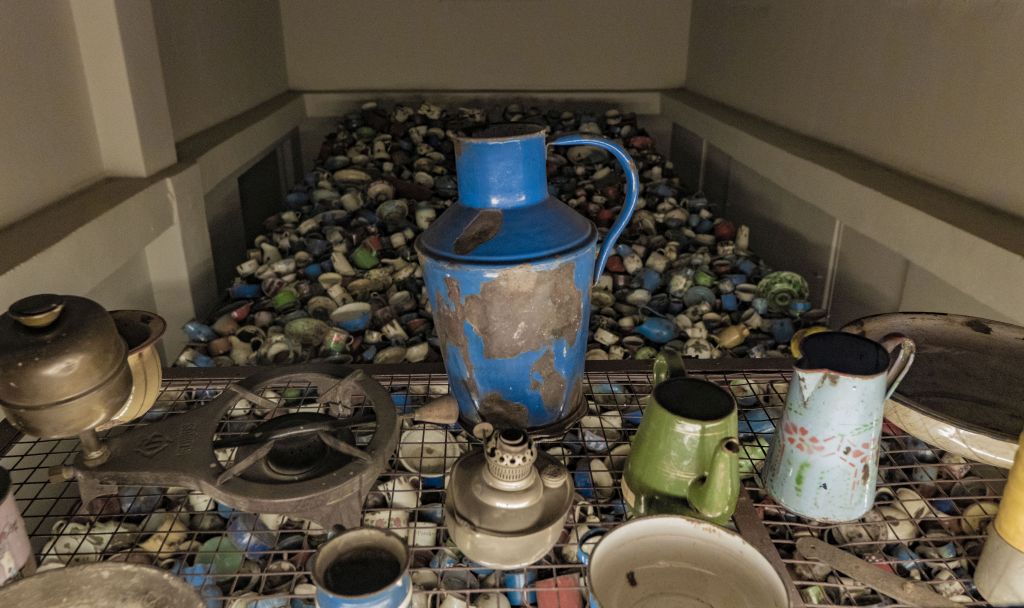
The exhibitions at the Auschwitz Museum immensely reflect the tragedy of the place. The sight of the victims’ clothes and suitcases proves shocking to tourists. Equal emotions are aroused by the shoes and the cut hair. Original photos from the camp are kept in the buildings, including those from the documentation of medical experiments. Most of them also depict the devastating effects of starvation and malnutrition-related diseases.
There is also no shortage of personal belongings of prisoners. Engagement rings, family jewellery or children’s toys are just some of the exhibits.
Auschwitz Hair Room
The Auschwitz Hair Room is an exhibition made of genuine hair of over 40 thousand people who lost their lives in Auschwitz. It’s enclosed in a large room made of plexiglass so that no one can access it. While there are photos of the hair room published on the Internet, you’re technically not supposed to take pictures of them without the Staff’s permission. That’s why we won’t include them – you should see this for yourself.
Auschwitz Shoe Room
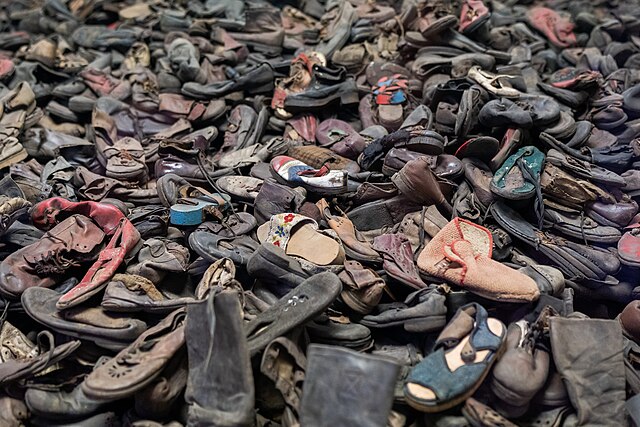
It’s quite a disturbing feeling to be so close to possessions of people who never went to reclaim them. The so-called Auschwitz Shoe Room, located under the 4th Block of KL Auschwitz, contains about 25,000 (!) pairs of shoes, which was just a day’s worth of shoes retrieved during the camp’s peak efficiency. Thinking about it while seeing this room that’s absolutely packed with shoes is quite scary.
Auschwitz Beds
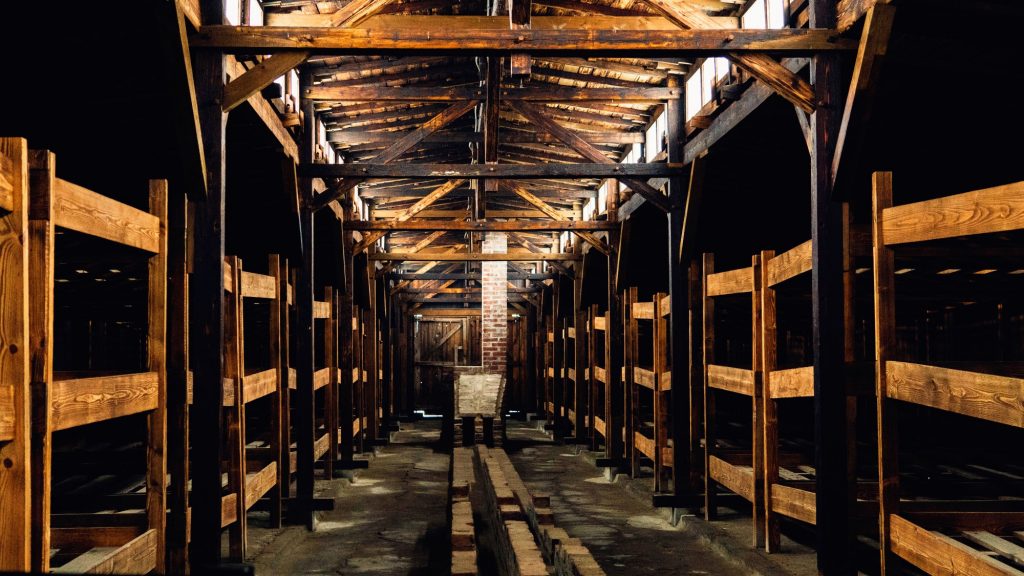
Thanks to vigilant conservation efforts, many of the Auschwitz barracks are standing at the Museum grounds to this day. While we’re calling these “beds”, lodging in the camp was more of a wooden or concrete bench, each supposed to be tightly packed with people. It had to be extremely uncomfortable and dehumanising to be packed with 10 other people on a bunk that’s not even that big.
Remembrance of the victims of the Holocaust
Holocaust memorials are a tribute to all Nazi victims. The year 2020 marked the 75th anniversary of the liberation of Auschwitz. On this occasion, exhibitions dedicated to the concentration camps were displayed around the world. The main celebration, however, was held at the memorial site.
Take a visit to the Auschwitz Memorial
Today, the camp is open for tours in organized groups. Auschwitz guides speak over a dozen languages, including English, Japanese, Korean, Norwegian, Swedish and Italian. At Krakow Direct we offer you transport by a modern minivan, in which the journey will pass extremely quickly. We will pick you up from the hotel and take you to the very gate of the museum. Do not hesitate and book your trip today!














